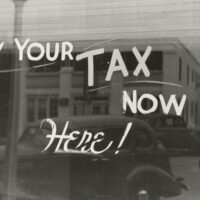Stafford’s Case Study in No Property Taxes

Texas cities rely on taxpayer dollars to generate revenue to fund local governmental services and infrastructure. The vast majority of cities across our state generate the bulk of their revenue from property taxes. For nearly 30 years, however, the City of Stafford, Texas has operated without collecting any property taxes.
Due to their unique makeup, Stafford was able to abolish property taxes in 1995 and operate relying in large part on sales taxes to fund the city’s needs. At the time, only around 12,000 people lived in the city. However, Stafford was home to around 1,200 businesses with around 22,000 employees. The daily influx of workers coming into the city, coupled with the high number of businesses per capita meant that Stafford had a strong enough revenue stream from sales taxes to be able to operate without collecting property taxes. The idea was to generate as much tax revenue as possible from non-residents so that the property tax savings could be passed along to the city’s residents.
When the tax was first abolished, many thought that the city would go broke within a few years. Other experts believed that Stafford’s unique composition would allow the system to work, even if it couldn’t work elsewhere. John Kennedy, a tax specialist at the Texas Research League wrote at the time: “Stafford’s situation is unusual. I can’t believe there are more than one in a million spots where you could get away with doing this.”
In any event, since the mid-90s the system has been very successful. Stafford citizens do of course, still pay other taxes, such as to the county and the school district, but the savings on the city portion of the property taxes have helped to draw more citizens and attention to the city.
Though few cities, if any, have been able to implement a similar model, it has been an interesting experiment to date.
In recent months, however, there have been rumblings that the City may be forced to bring back property taxes. Due to inflation and the city’s growth, the city is now considering bringing back the property tax to counteract increased operation costs. Stafford City council met in November to discuss the possibility of reinstating property taxes in the future.
In order to bring back the property tax, the City will have to get the approval of the voters. Under Texas law, cities are limited in how much they can increase taxes from one year to the next without first getting approval from the voters. Since the City of Stafford has had a property tax rate of $0 since 1995, they would effectively have to call an election in order to implement any tax rate in the future. Whether or not Stafford is able to continue operating with no city property tax, it was certainly an impressive run. It also serves as a perfect example of how each city is unique. While something that works in one place might not be feasible in another, outside the box thinking can help cities capitalize on their distinctive characteristics.
Please do not rely on this article as legal advice. We can tell you what the law is, but until we know the facts of your given situation, we cannot provide legal guidance. This website is for informational purposes and not for the purposes of providing legal advice.
